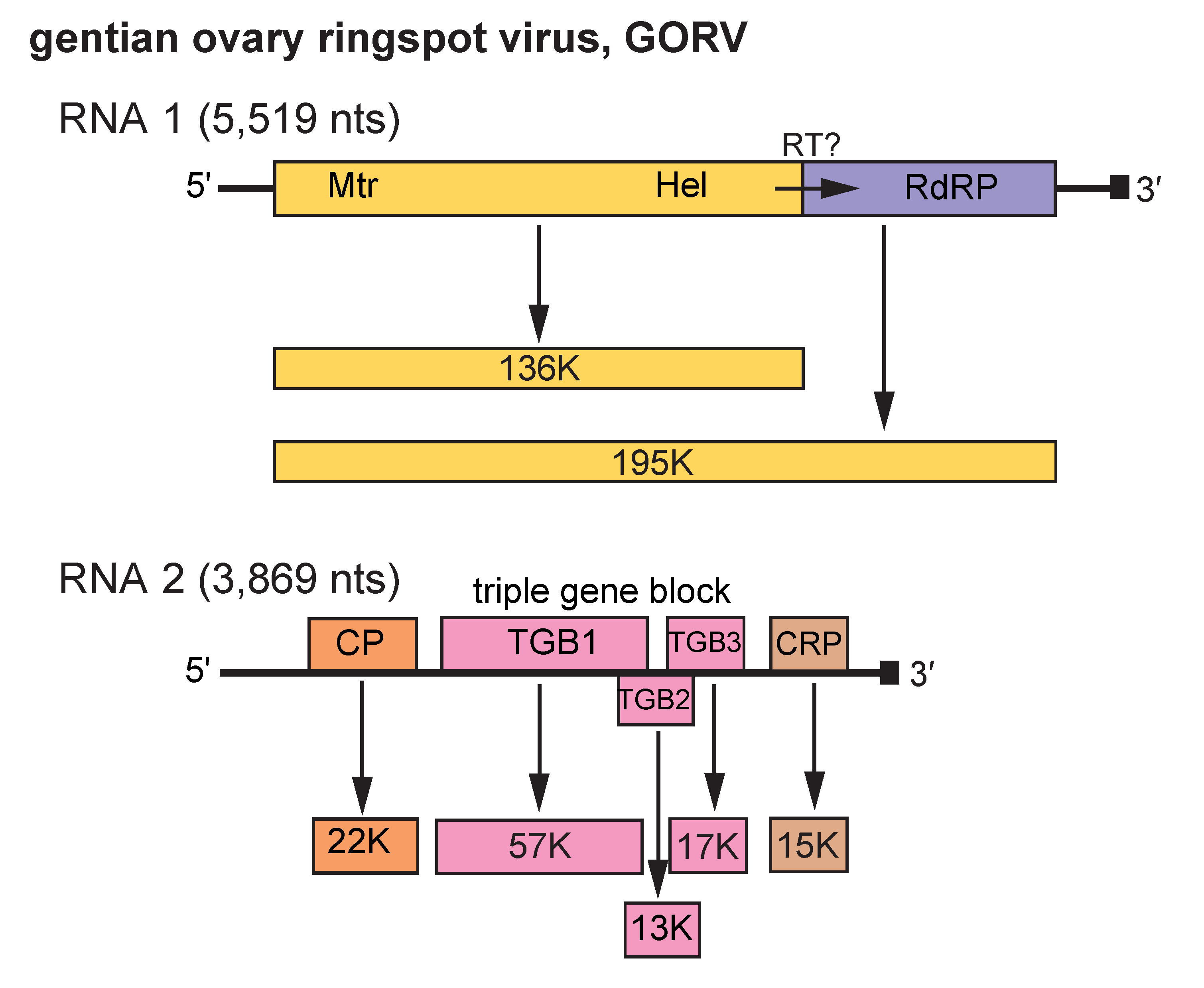Family: Virgaviridae
Genus: Goravirus
Distinguishing features
Viruses in the genus are distinctive in genome organisation and phylogeny. Like pecluviruses, they have 2 genomic RNAs and encode a ‘triple gene block’ but (a) the small cysteine-rich protein ORF is located near the 3′-end of RNA 2 (RNA 1 in pecluviruses) and (b) there is no equivalent of the second (39 kDa) ORF on RNA 2 that is characteristic of pecluviruses (Atsumi et al., 2015, Ong et al., 2016).
Virion
Morphology
Virions are rod-shaped and about 20nm in width, but it is difficult to determine their length because of disintegration during purification.
Nucleic acid
Complete or almost complete sequences are available for isolates of both species in the genus. RNA 1 is about 4.5-5.5 kb and RNA 2 about 3.0–3.9 kb. There is a 3′-terminal tRNA-like structure on both genomic RNAs.
Proteins
The capsid comprises multiple copies of a single polypeptide of about 22 kDa.
Genome organization and replication
RNA 1 has one predicted ORF. The 5'-proximal region encodes a replication protein containing methyltransferase and helicase domains. The 3'-proximal region, which is probably expressed as a readthrough product, encodes the RdRP. The 5'-proximal ORF of RNA 2 encodes a coat protein of about 22 kDa and downstream ORFs encode the triple gene block proteins (involved in virus cell-to-cell movement) and a cysteine-rich protein (CRP) that was shown to act as a suppressor of gene silencing (Figure 1. Goravirus).
|
Figure 1. Goravirus. Genomic organization of gentian ovary ringspot virus (GORV). The tRNA structure motifs at the 3′-ends of the RNAs are represented by a dark square. ORFs are indicated by rectangles and the presumed suppressible termination codon by an arrow (RT=readthrough). CRP, cysteine-rich protein. |
Biology
GORV is transmitted through pollen and causes ringspot symptoms on the ovaries of infected plants. The viruses can be transmitted experimentally by sap inoculation but the natural host range and any vectors are unknown (Atsumi et al., 2015).
Derivation of names
Gora: from gentian ovary ringspot virus.
Species demarcation criteria
There are only two species recognised in the genus and only single isolates of each have been characterized. The two viruses are only distantly related (<50% aa identity between homologous proteins) and clearly belong to different species. More rigorous demarcation criteria will be developed if further members of the genus are reported.


